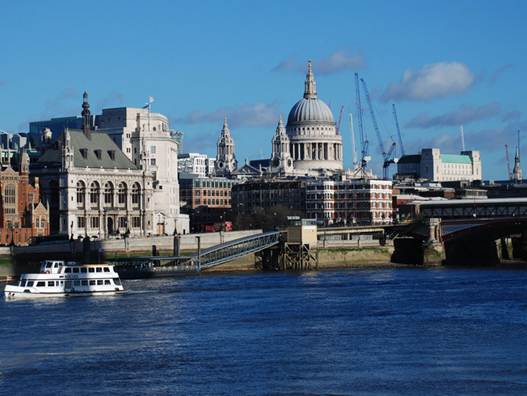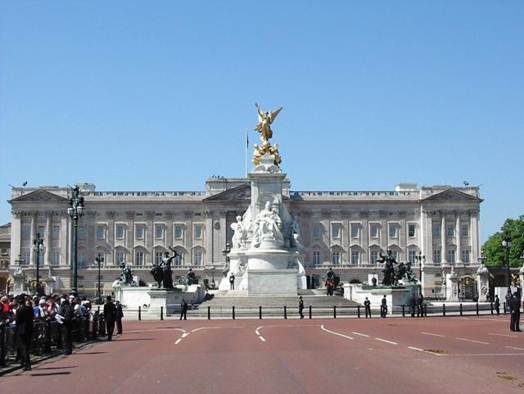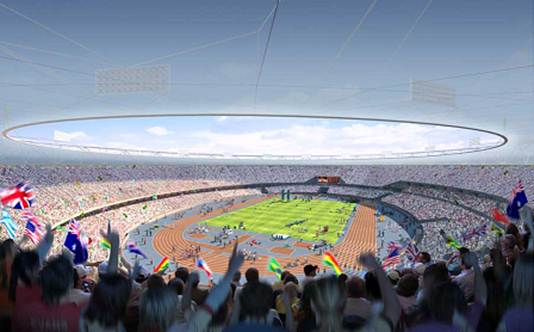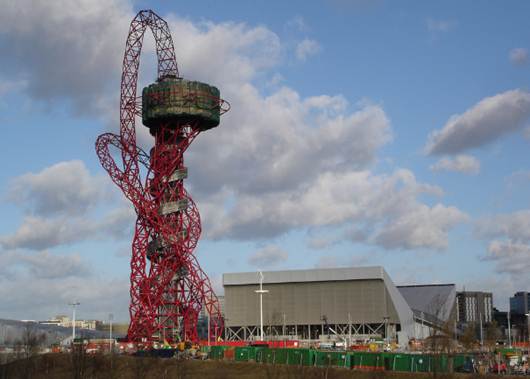The traditional heart of the IK capital may
be in the west, but a young generation of artists, chefs, designers and
hoteliers – as well as a brand new Olympic park – has taken up residence on the
other side of town. Writing exclusively for Condé Nast
The Olympic Games may be coming to the
British capital this summer – but to call the jamboree of javelin throwing and
synchronised swimming ‘London 2012’ is ever so slightly misleading. East London
2012 – that’s more like it. Sure, there’ll be horse-riding in Greenwich in the
south, while Lord’s cricket ground in the north-west has been retooled for
archery. And if Her Majesty Elizabeth II cares to look out of her bedroom
window this summer, she might make out the bikini-clad beach volleyball teams
patting a ball aloft on The Mall – the road that leads to Buckingham Palace.

Buckingham
Palace
Pretty much everything else, however, will
happening in the east of the city. The decision to build the Olympics Village
here on a former industrial wasteland in Stratford, has shifted the city’s
centre of gravity. London may be bisected horizontally by the River Thames, but
the real divide cuts vertically, between the affluent West End and the
working-class East End. If the West is the home of London’s old money, its
royal palace and luxe department stores, the East is the dynamo, the creative
heart, the embarking point for new generations of immigrants, the place where
layers of history coalesce.
The East is where you’ll find the edgier
art galleries; the fashion students emerging from squat parties; the hipsters
ridiculing one another’s facial hair; the bleary-eyed bands playing rowdy
electro in pubs. But if the creative types have been the shock troops of
regeneration, what has followed has changed the face of these neighbourhoods.
With every Hoxton boutique, every Shoreditch member’s club, every molecular
gastronomy restaurant opening in Hackney, every air-conditioned shopping mall
in Stratford, the East has inched upwards.

Olympic
Stadium
A pivotal moment came when West London
seemed to collectively discover the East – Prince Harry was photographed at a
ware house rave in Shoreditch in 2009. The new East London line extension
linked this formerly Tube-less expanse with the rest of the network in 2010.
Now, with the arrival of the Olympics in Stratford, it all suddenly feels very
official. Where once lonely goods trucks trundled across a weed-infested
wasteland, now there stands the austere chic Olympic Stadium, the hallucinatory
curves of Zaha Hadid’s Aquatics Centre and the planed bend of the Velodrome
(the finest of the three structures and the most likely arena for British
medals).
At the centre of the Olympics site is the
twisted monument to East London’s newfound confidence; the ArcelorMittal Orbit.
London’s newest and largest piece of public art, this rollercoaster-cum-viewing
platform was designed by Britain’s most successful international artist, Anish
Kapoor, and funded by its richest man, the steel billionaire Lakshmi Mittal.
Their shared Indian heritage is a reflection of London’s status as global
melting pot, a dynamism that is very much centred on the East. If you climb
376ft to the top, what unfurls in a landscape that East London natives cherish
not for its beauty but for its teeming strangeness. Up close, you will see
graffiti-ed shells of Victorian factories, the JCBs of regeneration,
houseboats, containers in which people have set up cafés, community gardens;
beyond you see gleaming skyscrapers and grand municipal buildings. It
illustrates the comings and goings, declines and falls, successive waves of
migrants and money.

the
ArcelorMittal Orbit
For a visitor? Well, aside from the poetic
urban walks to be had through this landscape, down canal towpaths and up
Edwardian side streets, there are more restaurants, bars, venues, galleries and
hotels in that melée than you could hope to experience in a single visit. Even
residents find it hard to keep up. One thing’s for sure – there really is no
need to go to the rest of London at all.